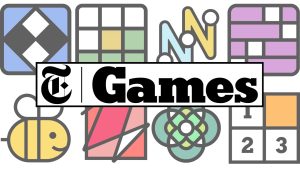Matadors Tutor Each Other
February 8, 2022
The bell rings, signaling the end of fourth period, and senior Thomas Quinnild checks the Teachmore website to see where he is tagged for Academy. After seeing he is supposed to attend Advanced Placement Environmental Science (APES), he heads over to Jyllian Smith’s classroom, ready to be a peer tutor for the period. Gathering his notes and materials, Quinnild walks to a table with three other students and begins to review the unit three material.
Miramonte’s group of peer tutors consists of sophomores, juniors, and seniors who have been recommended by teachers for being strong communicators, and responsible, reliable, and kind students. The program also accepts other student volunteers. The tutors are available for teachers during Academy every Wednesday and Friday. There are typically 26 to 29 peer tutors available every Academy, and 90 peer tutors in the whole program.
“We are basically looking for anyone who loves to help others and feels passionate about engaging with and encouraging fellow students,” English teacher Colleen Williams, who runs the Peer Tutoring program with Latin teacher Matt Davis, said.
Peer tutors used to work from the Peer Tutor Center in the Wellness center, but now students get tagged directly to specific classes and tutor there instead. Peer tutors can request certain subjects they would prefer to tutor or request one teacher to work with each semester. However, these requests are not always followed, and sometimes the students have to tutor whatever class needs assistance.
“One time I had to tutor for geometry which was a little challenging for me, but with the help of the student I am tutoring it really isn’t that bad,” Quinnild said.
Typically, peer tutors review material with students or help students with specific topics they’re struggling with, but some teachers will occasionally give out worksheets or a lesson plan for the peer tutor to follow. While some may find it intimidating to be tutored by one of their classmates, peer tutors try to make the experience as normal as possible.
“I want the students I peer tutor to view it as going over topics, like study buddies, because that’s my mindset,” Quinnild said.
There are a few different reasons why peer tutors sign up every Academy session and devote countless hours to helping their peers. Like Quinnild, most agree that watching their students succeed because of the help the peer tutor provides is “rewarding because you get to see the students you tutored succeed.” For others, helping out their peers brings a sense of pride for their teaching abilities.
For the students receiving help, peer tutors give them a chance to better understand difficult concepts, helping them be successful in the class. Also, it allows for a younger person to explain topics in a way that may be easier to grasp. Sometimes it just takes a different approach to fully understand some academic material.
“Working with peer tutors allows me to connect and work with someone my own age. Teachers can be confusing sometimes, so it’s insightful to have someone your own age help you,” senior Owen Van Stralen said.
Every teacher wants to help their students succeed. But just as students have a lot going on, so do teachers. The extra help provided by the peer tutors allows teachers to give their students the assistance they need, while also getting their own work done.
“I’ve heard anecdotally from so many teachers who say they have had such wonderful experiences with peer tutors,” Williams said.
The bell rings, marking the end of yet another Academy period. Quinnild’s students pack up their backpacks and head to the door, now feeling extra prepared for the upcoming APES test. As he exits the classroom, Quinnild takes a look at his “study buddies,” knowing he’s prepared these students to succeed.








